1958, Chinua Achebe writes a book and titles it Things Fall Apart. By 2021, that title has become a household phrase for most Ugandans. As a student in Uganda, it was compulsory to read Things Fall Apart. In my case, I have read the book at least five times. 1970, a film titled ‘Things Fall Apart’ is produced by Nigerian Filmmaker Francis Oladele and directed by Jason Pohland in Nigeria. October 27th 2021, that thrill is awakened by a project that showcases production film stills taken by Stephen Goldblatt, and screening ‘Things Fall Apart’ at the Uganda Museum by Modern Art Film Archiv.
The first time I heard about the project titled “50 years of Things Fall Apart (1971)”, I didn’t quite understand what it meant. In my head I thought a film festival had used the famous phrase Things Fall Apart to pay homage to Chinua Achebe, and incite the minds of most literature geeks. The realization that in fact this project had ties to Chinua Achebe and that a film was made from his books left me utterly mesmerized.
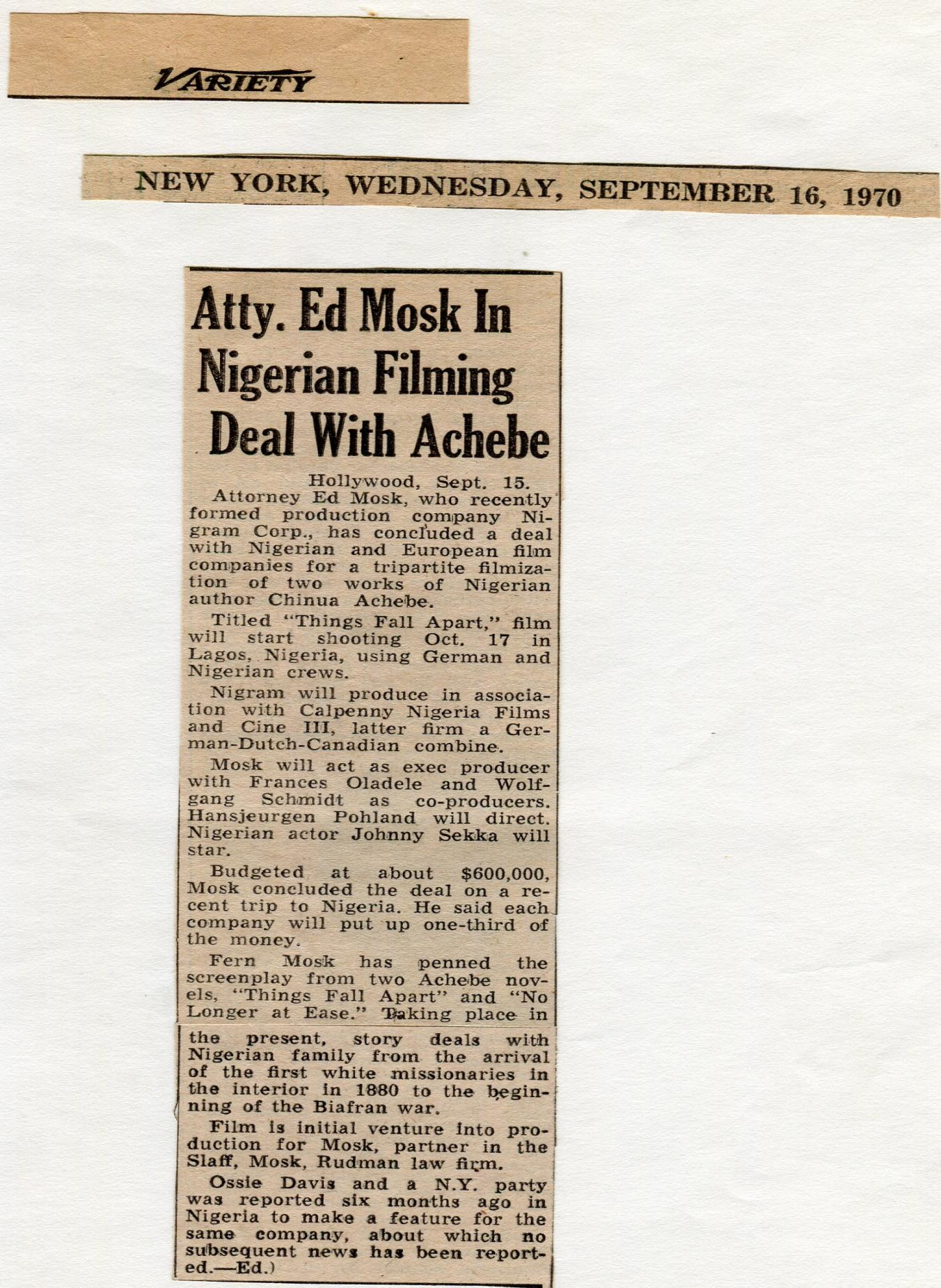
1 Newspaper announcement on the production of the film Things Fall Apart. Source: Modern Art Film Archiv
The Things Fall Apart book by Chinua Achebe was published in 1958, and it follows the story of Okonkwo, an African man who regardless of his background, manages to grow through the ranks and become one of the elders in his village Umofia. However, the odds were not in his favor, as their society is soon faced with colonialists and missionaries who threaten to change their way of life. In dealing with this, Okonkwo is led to hang himself.
The film, ‘Things Fall Apart’, combines the stories of Okonkwo and that of his grandson, Obi Okonkwo, whose story Chinua Achebe told in his second book, No longer at Ease. No longer at ease, published in 1960, follows the story of Obi Okonkwo as a young educated man in Nigeria battling the discovery of an African perspective at a time when colonialism and corruption had taken root in his nation’s soul.
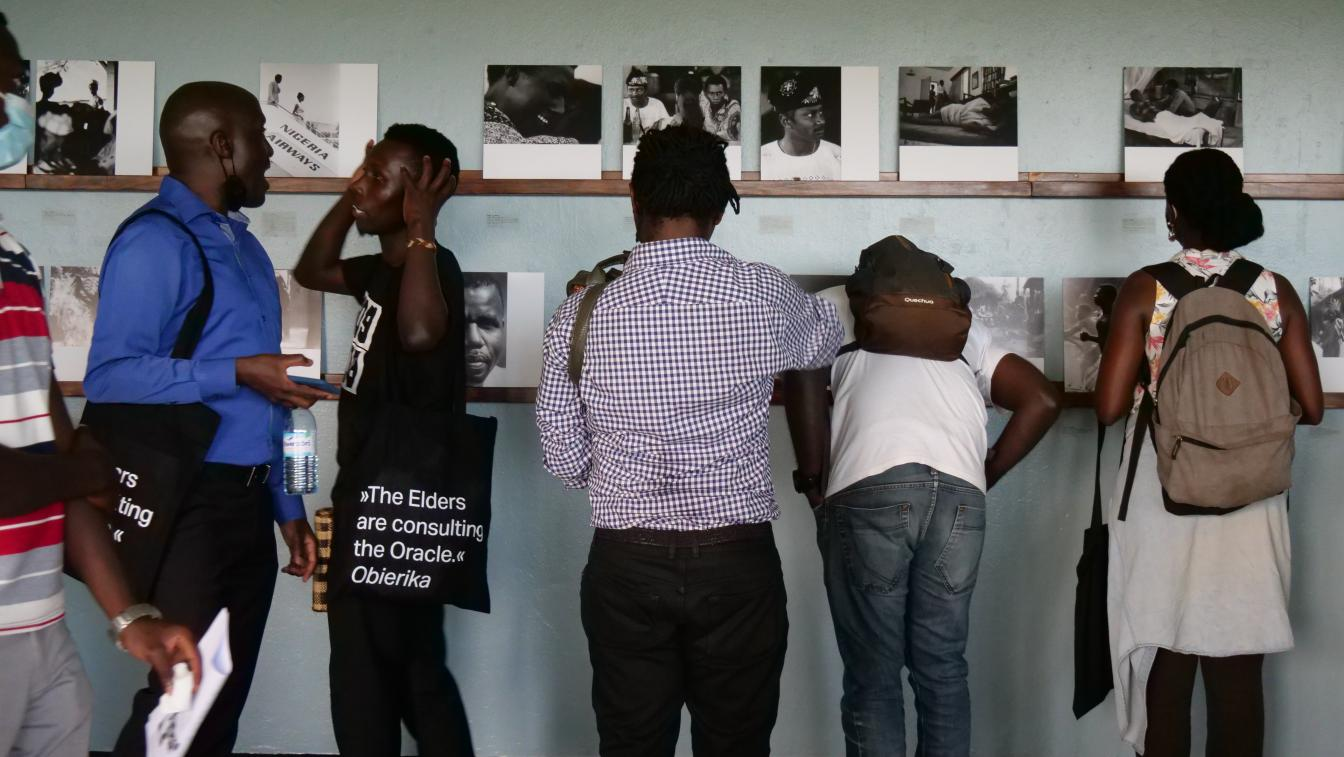
2 Obierika and Okonkwo in the film Things Fall Apart. Source: Stephen Goldblatt/Modern Art Film Archiv
The film adapted from the two books is seen through the eyes of Obi as he navigates being a young adult fighting against corruption in his country and battling the ideas of love that his society holds. He is in love with an ‘Osu’ (Igbo word for outcast) and that is unacceptable in his society. All the while, he is a journalist trying to expose the corrupt officials of his country- which soon leads to his demise just like his grandfather Okonkwo, the tragic hero of Umofia, who hung himself as a result of his fight against the advent of colonialism.
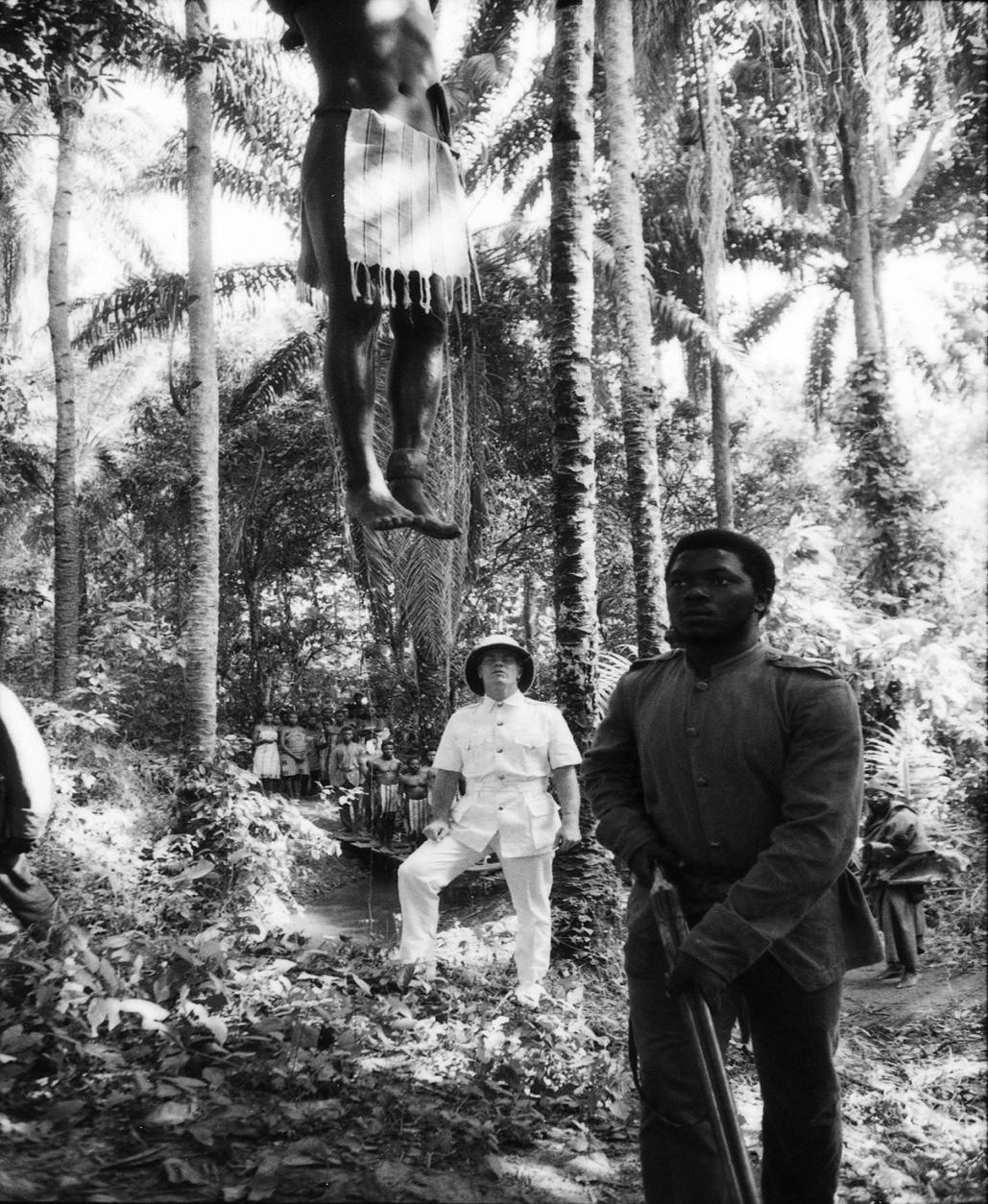
3 One of the scenes from the film Things Fall Apart. Source: Stephen Goldblatt/Modern Art Film Archiv
In the 1970’s, the film is showcased in Germany and later in America. The film is then lost to history’s waiting room until 2018 when the film materials are discovered in the estate of the producer of the film, Pohland. “It was good luck; I was searching for something else three years ago and found 2000 film stills” said Mareike Palmeira, Managing Director and Co-Founder of Modern Art Film Archiv.
Putting it together

4 Crew and Cast on the set of the film Things Fall Apart, Nigeria 1970. Source: Stephen Goldblatt/Modern Art Film Archiv
Upon finding this archive, Modern Art Film Archiv led by Mareike then went down a long road of research and partnerships to find out the content of the film stills and explore the history behind making the film ‘Things fall apart’. The film was shot in 1970, the year the Biafra war ended in Nigeria. To say it was a contentious time would be an understatement but filmmaker Pohland, together with Francis Oladele and Stephen Goldblatt shot and recorded a film that transcended continental and national borders in the 1970’s.
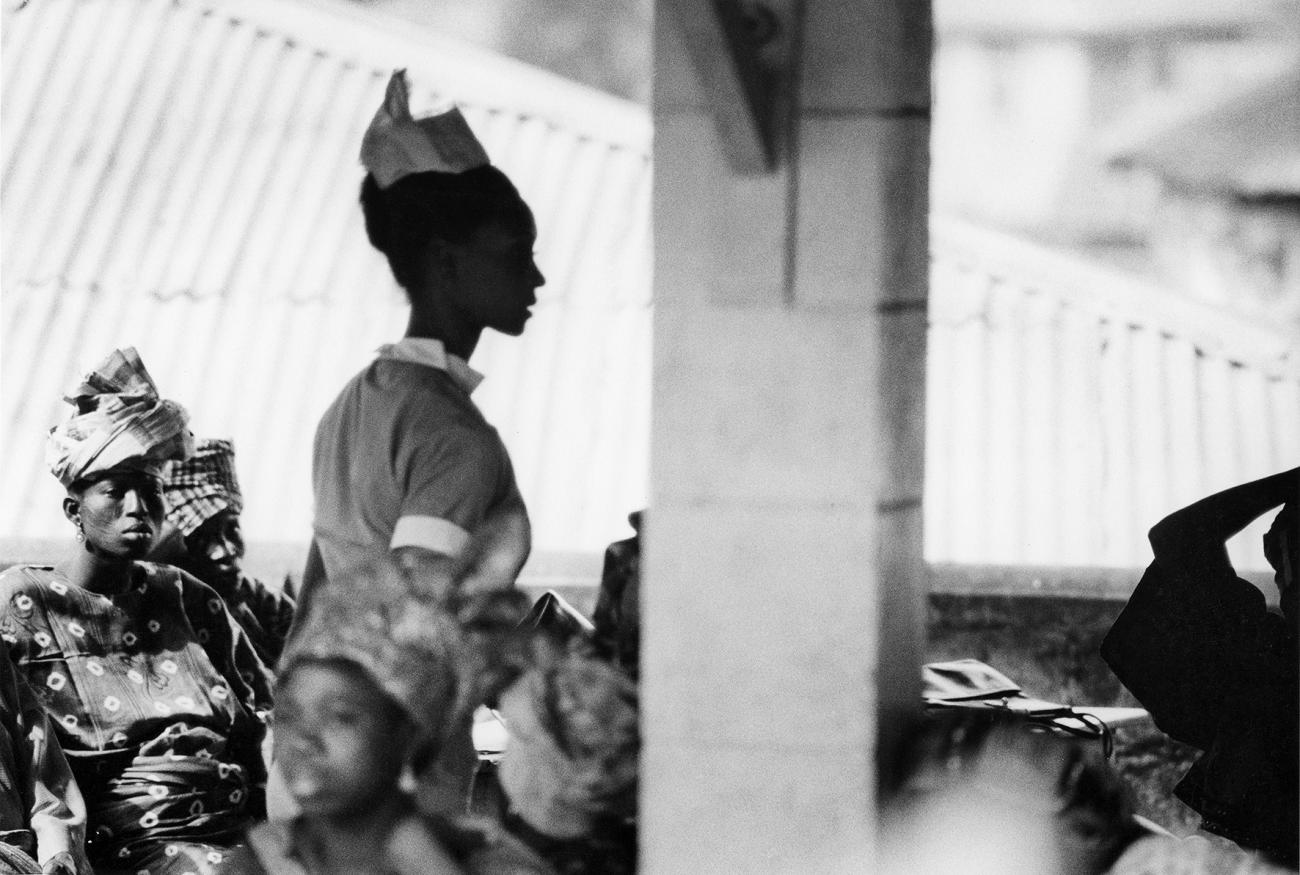
5 Princess Elizabeth in her role as Clara in the film Things Fall Apart. Source: Stephen Goldblatt/Modern Art Film Archiv
According to Akinbode Akinbiyi, a Nigerian born photographer and one of the curators who worked on this project, it took them about six weeks to go through all the 2000 film stills and put together a narrative that showcases the film and its production. Some of the images show Princess Elizabeth of Toro in her role as Clara, a close up of John Sekka as Obi Okonkwo, Orlando Martins (Nigeria’s first international film star) in his role as Obierika. The stills also show Chinua Achebe and photographer Goldblatt on set among other stills.
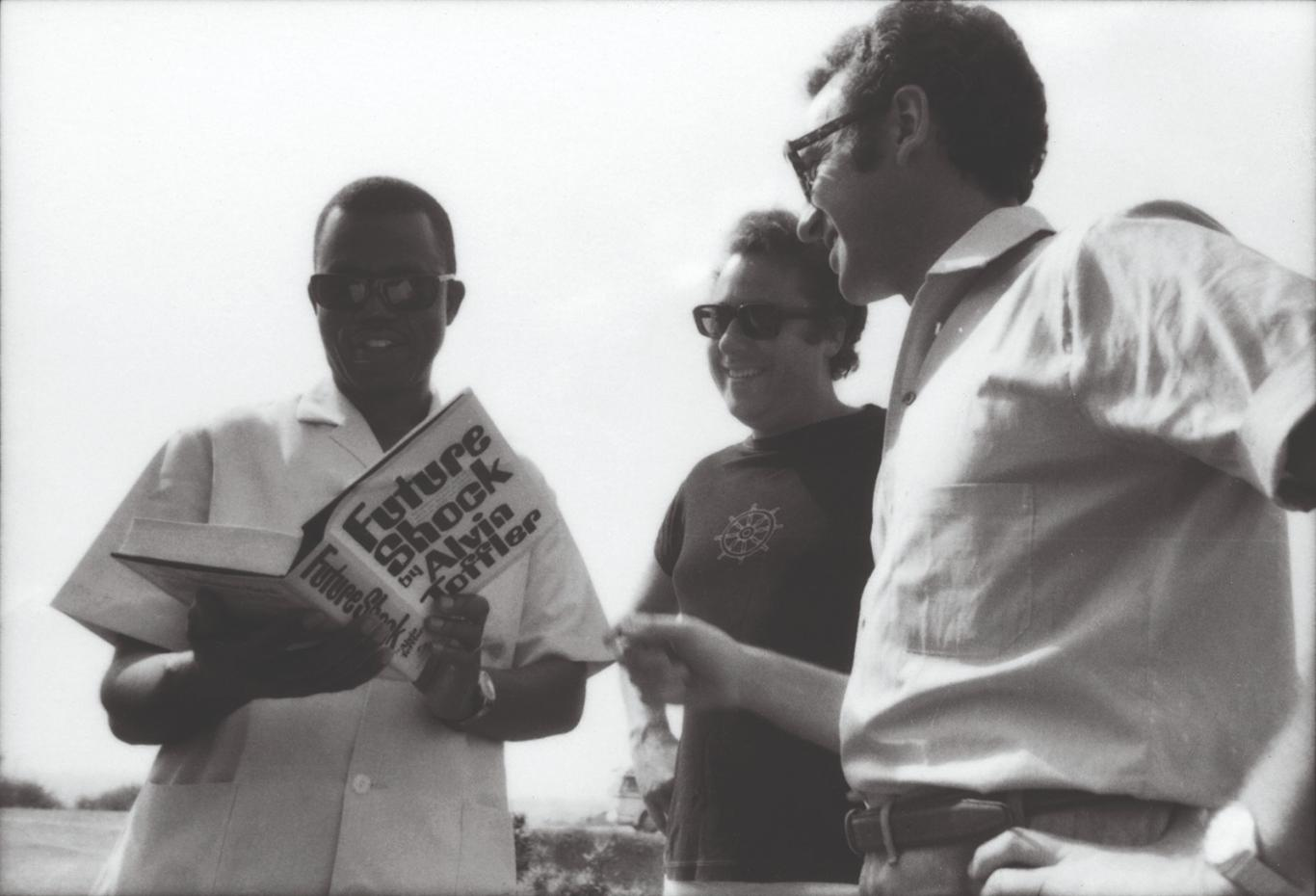
6 Chinua Achebe with Jason Pohland and Wolf Schmidt on set, Nigeria 1970. Source: Stephen Goldblatt/Modern Art Film Archiv
Exhibition and Screening
The launch of this project took place on the 27th of October 2021, the UNESCO World Day for Audio-Visual Heritage. This was especially appropriate because this film presents the heritage of African Film, and inspires further conversations on what more lies ahead in Africa and Uganda’s film trajectory.
The launch at the Uganda Museum brought together several film and literature lovers, notably Princess Elizabeth of Toro who was actively involved in the film making, playing the female lead role of Clara, Obi’s girlfriend. The launch was also attended by the Ugandan State Minister for Tourism, Hon. Mugarra Martin, as well as Matthias Schauer, Ambassador of the Federal Republic of Germany in Kampala and Christian Kettelhut, the director of Goethe-Zentrum Kampala.

7 Ambassador Matthias, Princess Elizabeth, Mareike and another guest at the launch event, Uganda Museum, October 2021. Source: Mareike Palmeira/Modern Art Film Archiv
The event also included a curator discussion between Christian, Mareike, Akinbode and Alex Odong, the exhibitions officer at the Uganda Museum, who all expounded on their different interactions with the film and the idea of film heritage. The point reiterated that delving into Africa’s film history revives it and mounts all Africans with an opportunity to learn what came before what we now know.
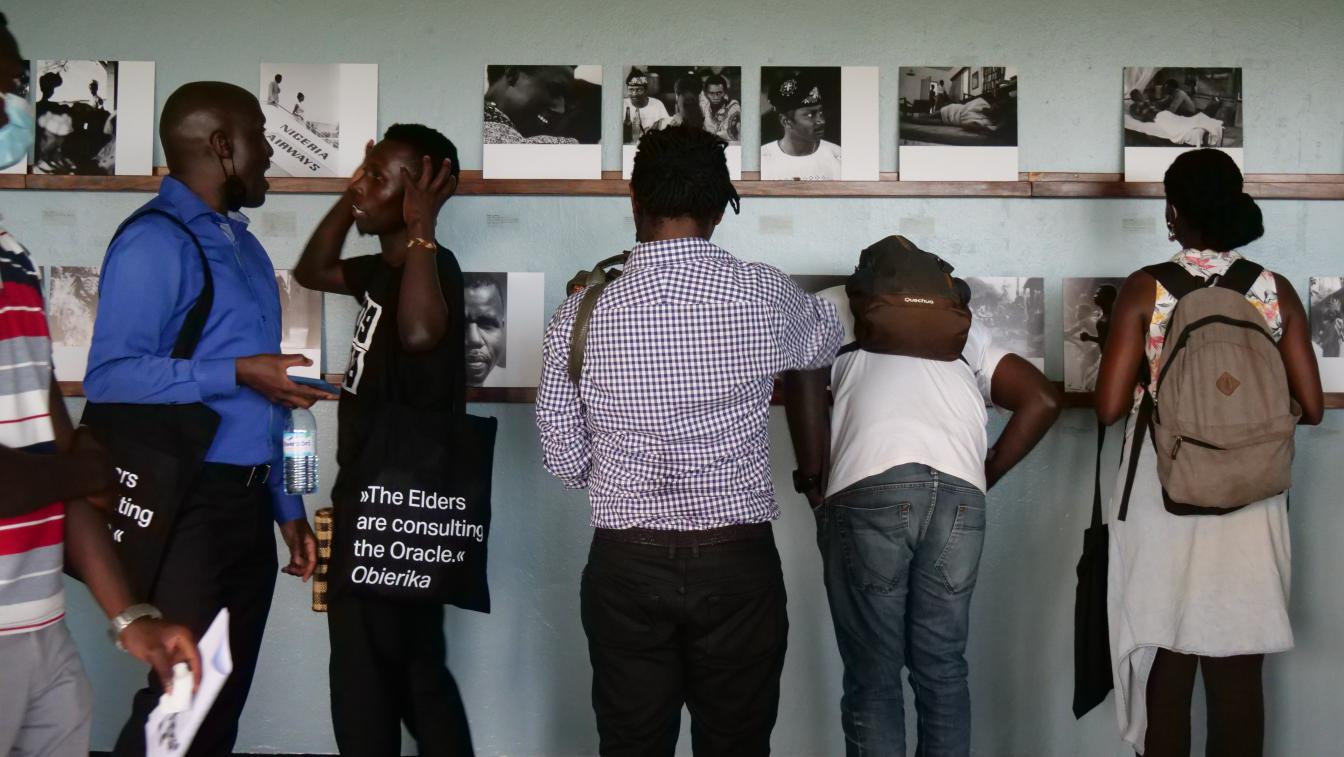
8 Revelers at the exhibition of Things Fall Apart film stills by Stephen Goldblatt, Uganda Museum, October 2021.
Then came the interaction with time. Those in attendance were led down the museum hall to interact with the exhibition of film stills that were taken in 1970 by Goldblatt. The curators Akinbode Akinbiyi and Gisela Kayser chose 45 film stills from the 2000 stills which show moments in the film as well as moments on set; behind the scenes. The exhibition also included artifacts from the production of the film- within locked cases I could see a bag that was used on set at the time. Viewers could also see parts of the film script, payment slips for some actors, correspondence letters between Pohland and some film crew members. There was enough to see to leave me jumping with joy. It wasn’t just about what I could see, it was what I could feel in the room. Looking around the exhibition hall, it was clear we all shared the sentiment that this was indeed an interaction with time.
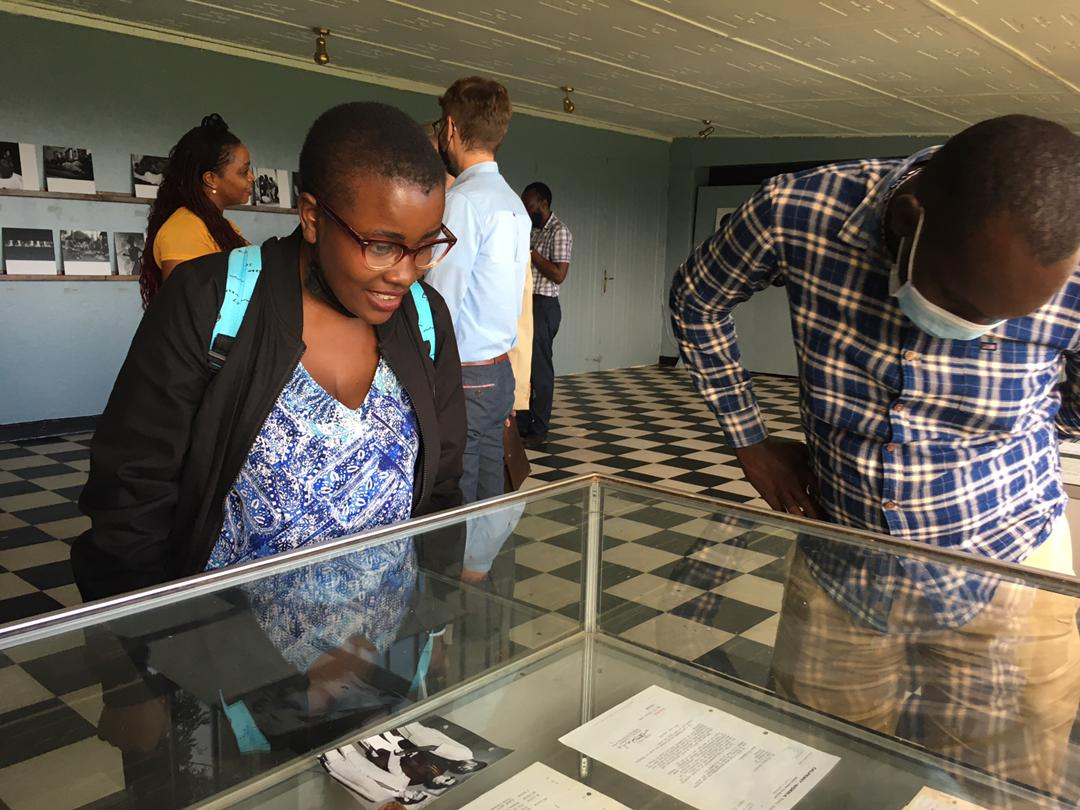
9 The author at the exhibition of artifacts related to the production of Things Fall Apart, Uganda Museum, October 2021
Most Ugandans who have read Chinua Achebe’s books did not know there was a film adaptation- let alone hope to interact with it. This begs the question, what lies in Uganda’s very own film history. The representative of the Museum, Alex Odong, put it best, “we need to get back to our archives to open up our heritage”. This project is an inspiration to go searching and look for what may have been lost to history. It may take a lot of work but the results will be widely appreciated.

10 Letter correspondence related to the film Things Fall Apart. Source: Modern Art Film Archiv
“If you are dealing with film history, you have to go in and find the missing parts” said Mareike who relates that they had to allow themselves to follow the path of history and in doing so realized there are two versions of the film, a German version screened in 1971 and an American version screened in 1974, which are quite different even though they were edited from the same material that was shot in 1970. As I watched the two versions, I could notice some of these differences especially pertaining to picture and sound quality, but more fascinating were the edits which show a difference in the linear layout of events whilst maintaining the overall gist of the story.
Way forward
According to Mareike, the film rights are now owned by the son of Francis Oladele, the Nigerian producer, so for any distribution in Africa it would have to go through him. In regards to the exhibition, the Uganda Museum exhibited the film stills till 12th December and both versions of the films were screened through November.
Mareike noted that the plan is also to take this project through Uganda in a mobile museum arrangement on a later date. This would hopefully be combined with screening of the films, a youth empowerment program in contemporary art and maybe even more. A mobile museum would move the project from just the museum to the different parts of Uganda which will increase the viewership of this project. I know for one my own father with whom I share the obsession about African literature, will be especially delighted to interact with this project in a mobile museum. According to Mareike, more plans to make a proper restoration of the film reels are underway, which would essentially mean the film can be accessed on DVD and even on streaming platforms.
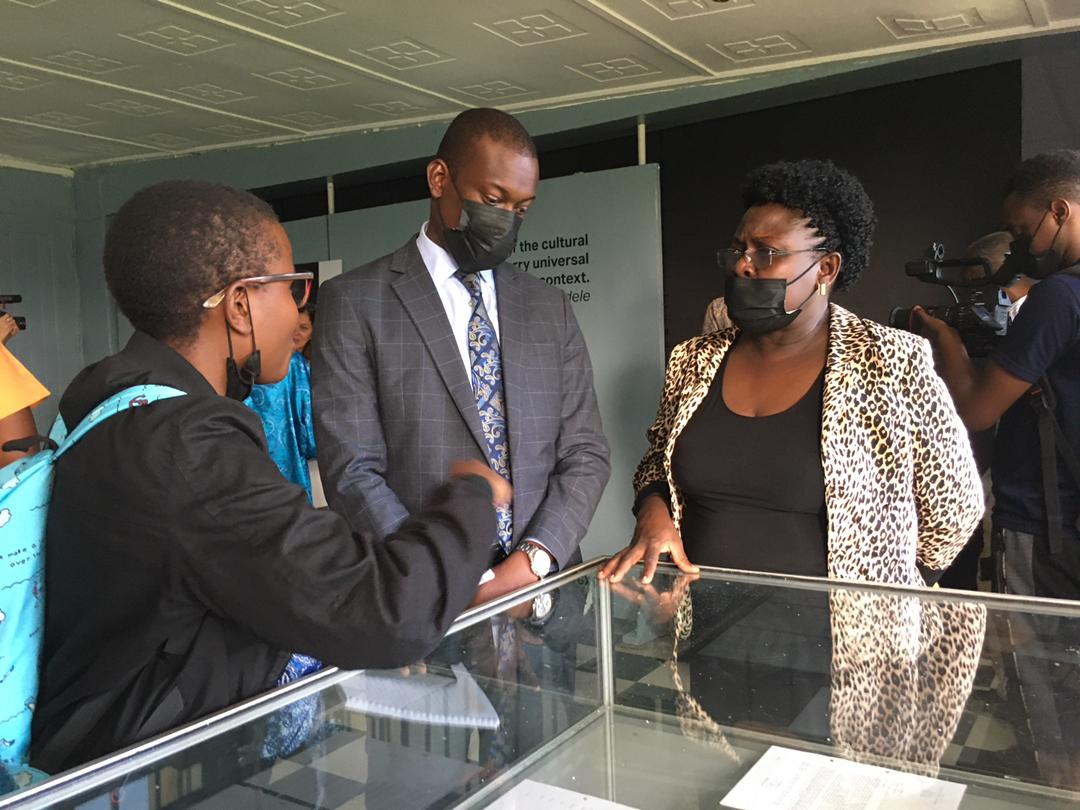
11 Author interacting with the State Minister for Tourism and the Uganda Museum Director at the launch of the project at the Uganda Museum, October 2021.
On a grand scale, this project is just an open pathway to search and find what Ugandan arts heritage is and where it lies. This is especially more probable now with the support of entities like the Germany embassy and the Goethe-Zentrum Kampala. The German ambassador noted, “our hope is to facilitate African cultural heritage. It is therefore important to create marketing to grow the knowledge of African cinema, because this archive for one is a document of time in film”. This is especially encouraging given the efforts seen to bring this exhibition to Uganda which was also praised by the Minister at the launch. The Minister expressed gratitude to the Ugandan Germany Cultural Society for supporting the growth of history in Uganda and the creative industry.
It will be interesting to see what more films and artistic works rest in history’s waiting room and how they are relevant today. As photographer Akinbode put it, we should be “looking at films from the past and trying to understand them in our time and move forward.”
